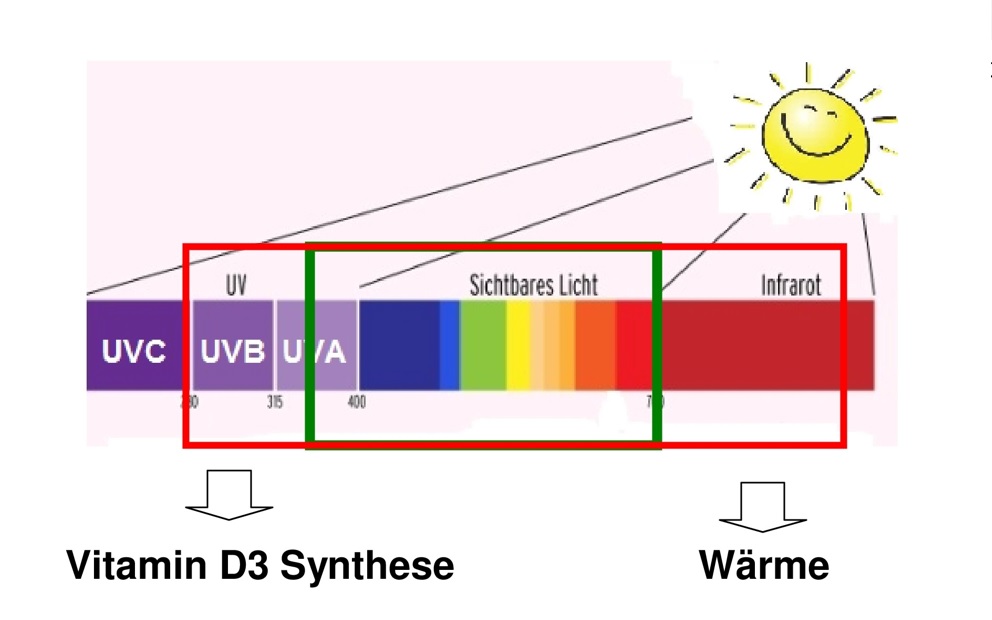We use cookies to make your experience better. To comply with the new e-Privacy directive, we need to ask for your consent to set the cookies. Learn more.
Differences between UVA UVB and UVC radiation
Posted:
April 24, 2022
Ultraviolet light is outside of what is visible (to us humans) in the electromagnetic spectrum
There are 3 different types of UV light: UVA, UVB, UVC

- UVA radiation is in the long-wave range between 315 and 400 nanometers and almost completely reaches the earth's surface. In humans, it is responsible for short-term tanning. Many species of reptiles can see this UVA light because they have special eye cones for it.
- The UVB radiation in the range between 280 and 315 nanometers is responsible for the extremely important vitamin D3 synthesis. The optimum for this process is 295 nanometers. In addition, it requires heat. Up to 90% of this radiation is filtered by the earth's atmosphere. The more oblique the sun is (in autumn and winter or at sunrise and sunset), the lower the radiation arriving on the earth's surface. UVB is responsible for tanning and sunburn.
- The dangerous short-wave UVC radiation between 200 - 280 nanometers is of course almost non-existent on the earth's surface. It is almost 100% filtered by the Earth's atmosphere. UVC from artificial sources is used for disinfection.
The ideal terrarium lamp therefore achieves the following:
- Sufficient UVB radiation for the necessary vitamin D3 synthesis. This ensures a balanced build-up of calcium (for the bones) and good health.
- Thermal radiation from above - also important for vitamin D3 synthesis.
- Very bright visible light with a natural spectrum.
- UVA radiation so that the reptiles feel comfortable.



